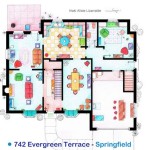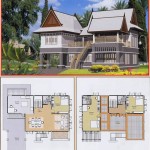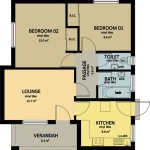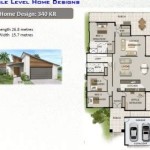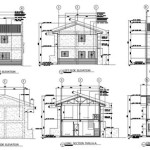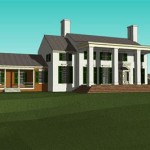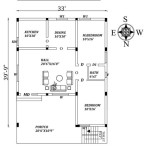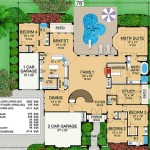Real Victorian House Plans: A Journey Through Architectural Elegance
Victorian architecture, a defining style of the late 19th century, continues to captivate homeowners and architects alike. Its ornate details, diverse layouts, and blend of historical influences offer a unique charm and grandeur. For those seeking to build or remodel a home inspired by this era, exploring real Victorian house plans is a fascinating journey into the past. This article delves into the key characteristics of Victorian architecture, explores popular Victorian house plans, and provides insights into the process of adapting these designs for modern living.
The Essence of Victorian Architecture
Victorian architecture, spanning from the mid-1830s to the early 1900s, encompasses a variety of sub-styles, each with its own distinct features. However, several common elements define the era's architectural spirit:
- Ornate Detailing: Victorian homes are known for their elaborate ornamentation, including decorative trim, gables, porches, and windows. These embellishments often showcase a combination of materials, such as wood, brick, and stone, creating a visually captivating facade.
- Asymmetrical Designs: Unlike symmetrical Georgian or Colonial houses, Victorian homes embrace asymmetry. They often boast varying rooflines, bay windows, and irregular floor plans, allowing for unique and functional spaces.
- Diverse Influences: Victorian architecture drew inspiration from various historical styles, including Gothic Revival, Romanesque Revival, and Queen Anne. This eclectic mix results in homes with a rich tapestry of architectural elements.
- Emphasis on Functionality: Beyond aesthetics, Victorian homes prioritized functionality. They frequently featured large families, so layouts were optimized for multiple bedrooms, spacious living areas, and dedicated spaces for domestic activities.
Exploring Popular Victorian House Plans
Within the realm of Victorian architecture, several popular house plans stand out. These designs offer distinct characteristics that cater to different tastes and needs:
Queen Anne
Characterized by its asymmetrical form, steep gables, and intricate detailing, the Queen Anne style embodies the Victorian era's love for ornamentation. These homes commonly feature wrap-around porches, bay windows, and turret-like structures.
Stick Style
The Stick Style, as the name suggests, emphasizes the use of exposed framing. The vertical and horizontal lines created by the wood beams add a sense of rhythm and sophistication to the facade. Stick Style homes often feature gabled roofs, balconies, and intricate wood carvings.
Gothic Revival
Inspired by medieval Gothic cathedrals, Gothic Revival homes feature pointed arches, stained glass windows, and steep gables. They often incorporate stonework, intricate carvings, and decorative timber framing, creating a sense of grandeur and romance.
Italianate
Italianate homes exhibit a strong influence from Italian Renaissance architecture. They typically feature low-pitched roofs, bracketed eaves, and tall windows with arched tops. These designs often incorporate smooth stucco exteriors and decorative corbels.
Adapting Victorian House Plans for Modern Living
While the charm of Victorian architecture remains captivating, modern lifestyles demand certain adjustments. Adapting real Victorian house plans for contemporary living involves incorporating features such as:
- Open Floor Plans: While Victorian homes often featured compartmentalized rooms, modern families prioritize open kitchens, dining areas, and living spaces. Adapting these layouts to create a flowing, interconnected environment enhances functionality and modern appeal.
- Updated Kitchens and Bathrooms: Victorian-era kitchens and bathrooms often lacked the modern amenities we expect today. Updating these spaces with contemporary appliances, fixtures, and finishes ensures comfort and convenience.
- Energy Efficiency: Incorporating energy-efficient features like insulation, windows, and heating and cooling systems is crucial for modern sustainability. These improvements contribute to lower energy consumption and environmental responsibility.
- Accessibility Features: For individuals with mobility limitations, accessibility features like ramps, wider doorways, and accessible bathrooms are essential. Adapting Victorian house plans to include these considerations ensures inclusivity and accessibility for all.
Real Victorian house plans offer a remarkable journey through the past, allowing us to appreciate the architectural elegance and functional designs of a bygone era. By understanding the distinctive features of this style and incorporating modern adaptations, homeowners can create homes that blend historical charm with contemporary comforts and functionality.

Vintage Victorian House Plans 1879 Print Plainfield George La Baw Floor Mansion Plan

The Glen Flora Victorian House Plans Old Vintage Lovee

29 Victorian House Plans E Book Vintage Architecture

Untitled Victorian House Plans Mansion Floor Plan Homes

House Plan 73837 Victorian Style With 4200 Sq Ft 2 Bed Bath

150 Victorian House Designs American Architecture Perspective Views Floor Plans 350 Printable Pages Instant Or Read On Your Tablet
Victorian House Plans Home Design Gml D 756 19255

Montrose 3363 5 Bedrooms And 4 Baths The House Designers

1891 Print Home Architectural Design Floor Plans Victorian Architecture Dwelling House
Sims 3 4 House Builds Victorian Plan 12805gc Wattpad

